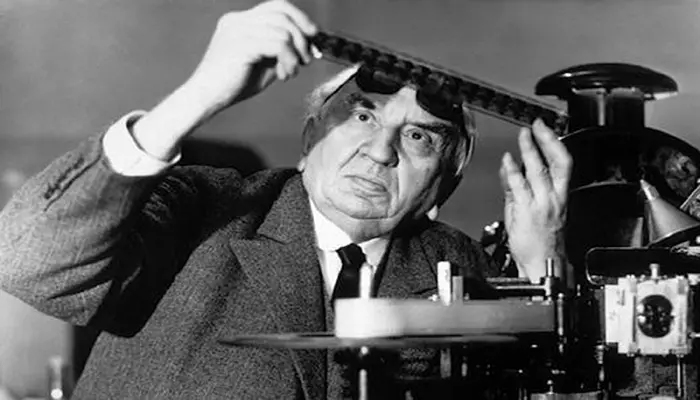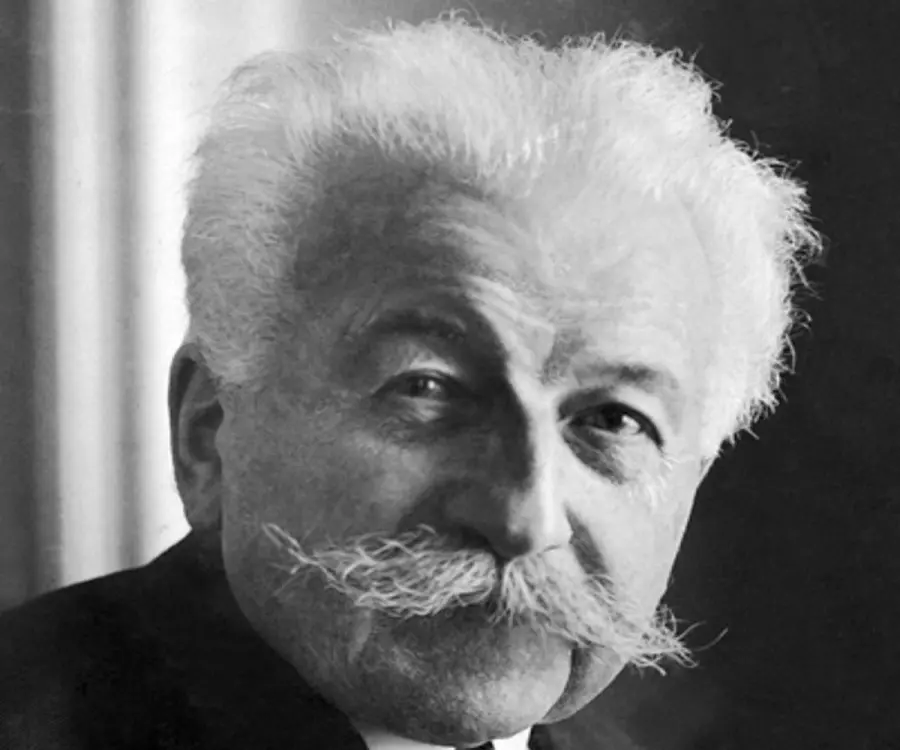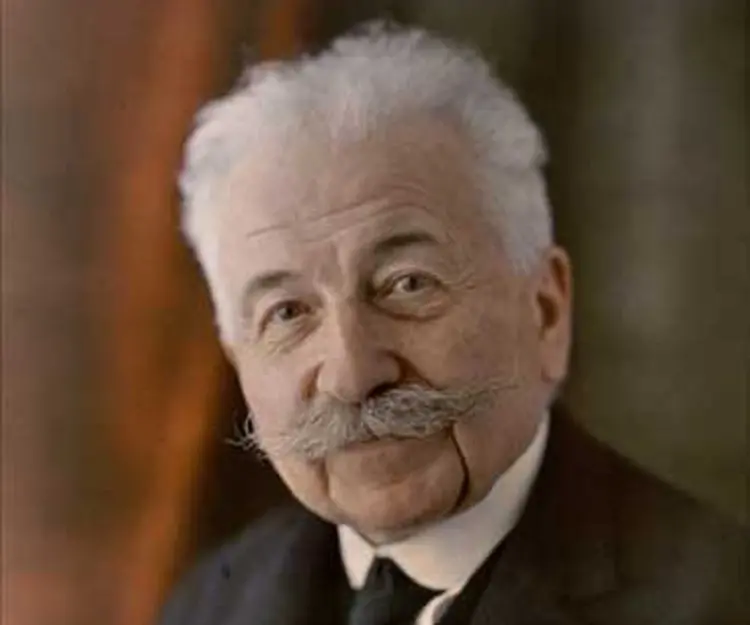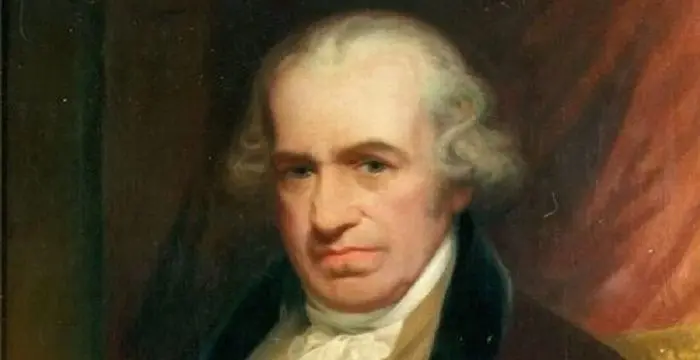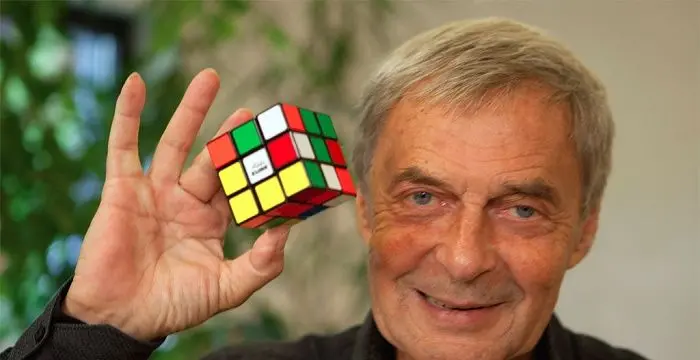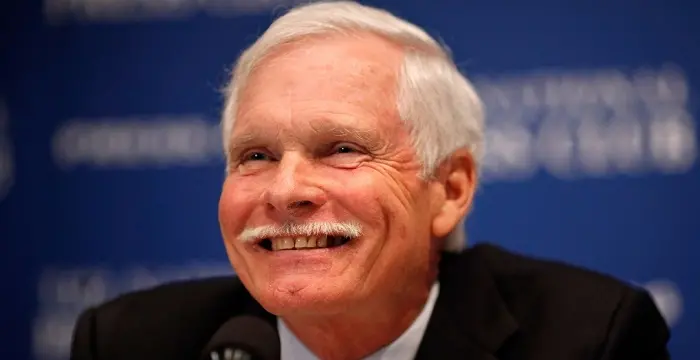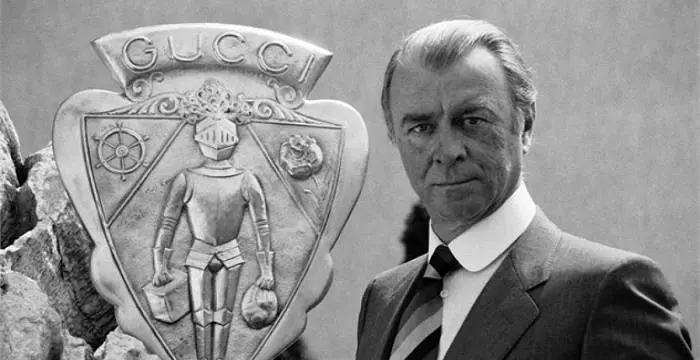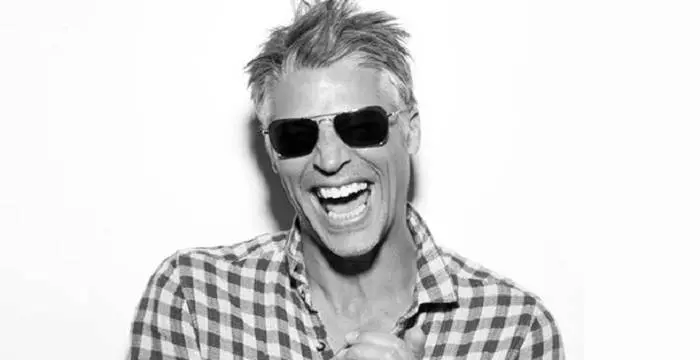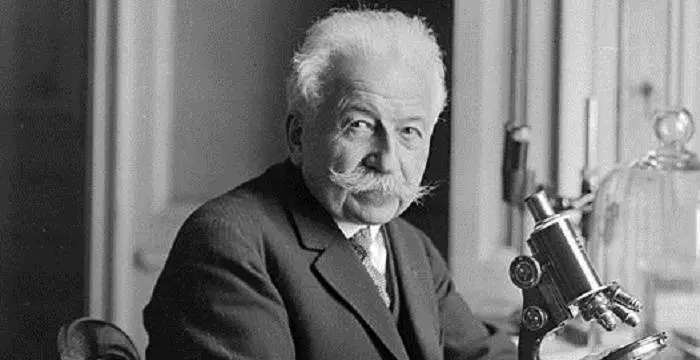
Auguste Lumière - Inventor of Cinematograph, Facts and Childhood
Auguste Lumière's Personal Details
Auguste Lumière was a French inventor, successful businessman and a medical professional
| Information | Detail |
|---|---|
| Birthday | October 19, 1862 |
| Died on | April 10, 1954 |
| Nationality | French |
| Famous | Business People, Inventors & Discoverers, Photographers, Inventor of Cinematograph |
| Spouses | Mrs. Auguste Lumiere |
| Siblings | Louis Lumière |
| Known as | Auguste Marie Louis Nicolas Lumière, Auguste Marie Nicolas Lumière |
| Childrens | Andrée Lumière, Henri Louis René Lumière |
| Discoveries / Inventions |
|
| Birth Place | Besançon |
| Gender | Male |
| Father | Antoine Lumière |
| Mother | Jeanne-Joséphine Costille |
| Sun Sign | Libra |
| Born in | Besançon |
| Famous as | Inventor of cinematograph |
| Died at Age | 91 |
// Famous Inventor of Cinematograph
Louis Lumière
Louis Lumière and his brother Auguste were French inventors who made the world’s first true motion picture. This biography of Louis Lumière provides detailed information about his childhood, life, achievements, works & timeline.
Auguste Lumière's photo
Who is Auguste Lumière?
Auguste Marie Louis Nicolas Lumière was a French inventor, successful businessman and a medical professional. He started his career as a manager in his father’s photographic business. Later he, along with his brother Louis Lumière, invented the cinematograph and shot the very first motion picture with it. Of course, many may argue that others had patented similar machines before them; however, it cannot be denied that they were first to invent a technology that made cinema a mass media. Their invention of Autochrome Lumière, a color photographic technique, also made a mark and earned them Elliott Cresson Medal. However, Auguste’s real interest lay in medicine and so from the beginning of the twentieth century he began to concentrate more on it. He not only did extensive research on tuberculosis and cancer, but also opened a pharmaceutical company of his own. In addition, he also found time to pen a number of books, among which most are based on his extensive medical research.
// Famous Inventors & Discoverers
Nikola Tesla
Nikola Tesla was a Serbian-American inventor, best known for his development of alternating current electrical systems. This biography of Nikola Tesla provides detailed information about his childhood, life, achievements, works & timeline.
Thomas Newcomen
Thomas Newcomen was a British inventor who developed the world’s first steam engine. Browse through this biography to learn in details about his life, career, works and timeline.
Erno Rubik
The famous inventor and educationist, Erno Rubik is known world-wide for his invention the ‘Rubik’s Cube’. To know more about the childhood, profile, timeline and career of this famous architect-inventor read on.
Childhood & Early Years
Auguste Lumière was born on October 19, 1862 in Besançon, France. His father Claude-Antoine Lumière was initially a painter; but later he began to deal in photographic equipments and made a lot of money from it. The name of Auguste’s mother was Jeanne Joséphine Costille Lumière.
Apart from Auguste, the couple had three daughters named Jeanne Claudine Odette Lumière Koehler, Juliette Lumière Winckler Gélibert and Francine Lumière Winckler and two sons Édouard and Louis Jean. Among them Louis Jean worked closely with Auguste to create cinematograph.
In 1870, the family moved to Lyon. Here the boys were enrolled at the La Martiniere and impressed their teachers with their brilliance. They were especially good in science. Auguste passed out with a diploma in chemistry. He was also very interested in biology and medicine. Louis also got top honors in mathematics and chemistry.
As Businessman
After graduation, both Auguste and Louis went to work with their father as manager and physicist respectively. As Auguste concentrated on managing the business, Louis focused on improving photographic tools his father was manufacturing.
In 1881, Louis invented the ‘dry plate’ process, later known as 'Etiquette Bleue'. The device simplified the method of developing films and became instantly popular.
Invention of this new technology provided a boost to their father’s business. Very soon they built a new factory in the Monplaisir quarter of the Lyons Suburbs. In 1892, Antoine handed over the rein of his business to his sons and retired.
By 1894, the company under the guidance of Auguste and Louis Lumière began to produce 15,000,000 plates per year and earned a yearly profit of $15 million.
Invention of Cinematograph
In 1894, Antoine Lumière was invited to Pars to attend an exhibition of Thomas Edison’s newly invented kinetoscope. He was also presented with a length of kinetoscope film by one of Edison’s concessionaires. On returning back, he handed this over to his sons.
Antoine then explained that as the films had readymade market he wanted them to manufacture these. Auguste and Louis agreed. They spent the entire winter experimenting on it. They soon identified two drawbacks of the Kinetoscope and set out to overcome them.
While kinetoscope enabled only one person to watch at a time, they wanted to create something that would allow many people to watch at the same time. Besides, they felt that the machine was too big and wanted to create something more manageable. There was also scope for improvement in animation and projection.
Auguste Lumière began his experiment first. By early 1895, the Lumière brothers invented their own device, which they called ‘Cinématographe’. It was made of copper and wood and weighed around 5 kg.
The machine consisted of a camera combined with a printer and a projector. In it they incorporated a device comparable to that found in sewing machines. This resulted in the intermittent movement of films as opposed to Edison’s continuous movement.
Besides, they used a film speed of 16 frames per second; it was much slower than Edison’s speed of 48 fps. As a result, one needed lesser amount of films. Clutter and grinding associated with Edison’s Kinetoscope was also much reduced.
On February 13, 1895, Auguste and Louis Lumière patented their device in France. On March 19, 1895, they recorded their first film titled ‘La Sortie de l'Usine Lumière à Lyon’ or ‘Employees Leaving the Lumière Factory’. It was 46 seconds long.
On March 22, 1895, Auguste invited selected guests for a private screening of the film at 44 Rue de Rennes in Paris. It was a grand success. Buoyed by this, Luis continued making more films based on the world he saw around him.
The brothers then arranged few more private screenings. These generated considerable interest among the viewers. However, they did not introduce the cinematograph to the public, but applied for English patent on April 18, 1895.
On December 28, 1895 the Lumière brothers made their public debut at the Grand Cafe on Paris’s Boulevard de Capuchines. Here they showed ten short films, each of which was less than 50 seconds.
Next year they took their show to Brussels. The show was held at the Galleries Saint-Hubert on March 1. 1896. They also sent trained crews to different cities of the world such as London, Montreal, New York, Buenos Aires, and Mumbai to showcase their cinematograph.
Color Photography
Auguste did not really believe that their invention had much commercial value. They emphasized more on the scientific importance of the device. When other filmmakers offered thousands of franks for a single piece of cinematograph, they refused to sell. Instead, they began experimenting with color photographic processes.
Gabriel Lippmann was already working on it and his process was based on interference phenomenon. The Lumière brothers started their experiment on it and by the end of 1890s they invented bichromated glue process of color photography. It was exhibited at the Exposition Universelle in Paris in 1900.
Although they tried to commercialize it, they did not have much success. Undaunted, they kept on experimenting and invented a new technique called Autochrome Lumière. This they patented in 1903. The product was commercially launched in 1907 and earned huge profit. Later the company also invented color plates.
Medicine
From the beginning of 1900, in spite of experiencing huge success in photography and motion picture technology, Auguste Lumière began to take more interest in biochemistry and medicine. These two had been his favorite subjects from the student days and now he started studying homeopathic medicine system.
In 1914, Auguste joined the medical profession as a director of the radiological department in the local hospital. Some time now, he also undertook research work on tuberculosis and cancer. In 1928, he published his findings in a book called ‘Life, Illness and Death: Colloidal Phenomena’.
By this time, he had already published his first memoire (1914) and three other pieces on medical research. Later he wrote many more. His second memoire ‘Mes travaux et mes jours’ (My Work and My Life) was published a year before his death in 1953.
It is believed, Auguste was the first person in France to use x-ray machines in research works. He also invented his own brand of non-sticking bandages and opened his own pharmaceutical company.
Major Works
Auguste Lumière in collaboration with Louis Lumière invented the cinematograph and made significant developments in color photography.
Awards & Achievements
In 1909, he received Elliott Cresson Medal along with his brothers Louis Jean for their contribution to color photography.
In recognition of his service to medicine he was made National Order of the Legion of Honor, posthumously, on October 19, 1962.
In addition, the brothers have been included in the Hollywood Walk of Fame (6320 Hollywood Blvd) for their contribution to motion pictures. Asteroid 775 has also been named after them.
Personal Life & Legacy
Auguste married Marie Euphrasie Marguerite Winckler Lumière on August 31, 1893. The couple had two children. Their daughter Joséphine Léocadie Andrée Lumière was born on Jun 22, 1894, and son Henri Louis René Lumière was born on May 8, 1897.
Auguste Lumière lived until the age of 91 and died at home on April 10, 1954, in Lyon.
// Famous Business People
Kristina Sunshine Jung
Kristina Sunshine Jung is an American entrepreneur and actor, better known as the daughter of drug-smuggler George Jung and his ex-wife, Mirtha Jung.
Ted Turner
Ted Turner is a media tycoon who founded the cable news network CNN. This biography of Ted Turner provides detailed information about his childhood, life, achievements, works & timeline.
Guccio Gucci
Guccio Gucci was a famous fashion designer from Florence, Italy, and the founder of the world-renowned fashion brand ‘Gucci.’ Check out this biography to know about his childhood, family, personal life, career, etc.
Auguste Lumière biography timelines
- // 19th Oct 1862Auguste Lumière was born on October 19, 1862 in Besançon, France. His father Claude-Antoine Lumière was initially a painter; but later he began to deal in photographic equipments and made a lot of money from it. The name of Auguste’s mother was Jeanne Joséphine Costille Lumière.
- // 1870In 1870, the family moved to Lyon. Here the boys were enrolled at the La Martiniere and impressed their teachers with their brilliance. They were especially good in science. Auguste passed out with a diploma in chemistry. He was also very interested in biology and medicine. Louis also got top honors in mathematics and chemistry.
- // 1881In 1881, Louis invented the ‘dry plate’ process, later known as 'Etiquette Bleue'. The device simplified the method of developing films and became instantly popular.
- // 1892Invention of this new technology provided a boost to their father’s business. Very soon they built a new factory in the Monplaisir quarter of the Lyons Suburbs. In 1892, Antoine handed over the rein of his business to his sons and retired.
- // 31st Aug 1893Auguste married Marie Euphrasie Marguerite Winckler Lumière on August 31, 1893. The couple had two children. Their daughter Joséphine Léocadie Andrée Lumière was born on Jun 22, 1894, and son Henri Louis René Lumière was born on May 8, 1897.
- // 1894By 1894, the company under the guidance of Auguste and Louis Lumière began to produce 15,000,000 plates per year and earned a yearly profit of $15 million.
- // 1894In 1894, Antoine Lumière was invited to Pars to attend an exhibition of Thomas Edison’s newly invented kinetoscope. He was also presented with a length of kinetoscope film by one of Edison’s concessionaires. On returning back, he handed this over to his sons.
- // 1895Auguste Lumière began his experiment first. By early 1895, the Lumière brothers invented their own device, which they called ‘Cinématographe’. It was made of copper and wood and weighed around 5 kg.
- // 19th Mar 1895On February 13, 1895, Auguste and Louis Lumière patented their device in France. On March 19, 1895, they recorded their first film titled ‘La Sortie de l'Usine Lumière à Lyon’ or ‘Employees Leaving the Lumière Factory’. It was 46 seconds long.
- // 22nd Mar 1895On March 22, 1895, Auguste invited selected guests for a private screening of the film at 44 Rue de Rennes in Paris. It was a grand success. Buoyed by this, Luis continued making more films based on the world he saw around him.
- // 18th Apr 1895The brothers then arranged few more private screenings. These generated considerable interest among the viewers. However, they did not introduce the cinematograph to the public, but applied for English patent on April 18, 1895.
- // 28th Dec 1895On December 28, 1895 the Lumière brothers made their public debut at the Grand Cafe on Paris’s Boulevard de Capuchines. Here they showed ten short films, each of which was less than 50 seconds.
- // 1896Next year they took their show to Brussels. The show was held at the Galleries Saint-Hubert on March 1. 1896. They also sent trained crews to different cities of the world such as London, Montreal, New York, Buenos Aires, and Mumbai to showcase their cinematograph.
- // 1900Gabriel Lippmann was already working on it and his process was based on interference phenomenon. The Lumière brothers started their experiment on it and by the end of 1890s they invented bichromated glue process of color photography. It was exhibited at the Exposition Universelle in Paris in 1900.
- // 1900From the beginning of 1900, in spite of experiencing huge success in photography and motion picture technology, Auguste Lumière began to take more interest in biochemistry and medicine. These two had been his favorite subjects from the student days and now he started studying homeopathic medicine system.
- // 1903 To 1907Although they tried to commercialize it, they did not have much success. Undaunted, they kept on experimenting and invented a new technique called Autochrome Lumière. This they patented in 1903. The product was commercially launched in 1907 and earned huge profit. Later the company also invented color plates.
- // 1909In 1909, he received Elliott Cresson Medal along with his brothers Louis Jean for their contribution to color photography.
- // 1914 To 1928In 1914, Auguste joined the medical profession as a director of the radiological department in the local hospital. Some time now, he also undertook research work on tuberculosis and cancer. In 1928, he published his findings in a book called ‘Life, Illness and Death: Colloidal Phenomena’.
- // 1914 To 1953By this time, he had already published his first memoire (1914) and three other pieces on medical research. Later he wrote many more. His second memoire ‘Mes travaux et mes jours’ (My Work and My Life) was published a year before his death in 1953.
- // 10th Apr 1954Auguste Lumière lived until the age of 91 and died at home on April 10, 1954, in Lyon.
// Famous Photographers
Susan Mikula
Susan Mikula is an American artist and photographer. Check out this biography to know about her childhood, family life, achievements and fun factsabout her life.
Bryan Randall
Bryan Randall is an American professional photographer. Check out this biography to know about his family, personal life, relationships, etc.
Ansel Adams
Ansel Adams was a renowned American photographer and environmentalist. Check out this biography to know about his childhood, family life, achievements and other facts about his life.
Antony Armstrong-Jones, 1st Earl of Snowdon
Antony Armstrong-Jones was a British photographer and film-maker. Check out this biography formore information on his childhood, family, personal life, etc.
Sasha Czack
Sasha Czack is an American photographer, well-known as ex-wife of Hollywood Superstar Sylvester Stallone. Let’s take a look at her family, personal life, career, and other facts.
Man Ray
Man Ray was an illustrious modernist artist and was known for his experimental photography. Go through this biography to learn more about his profile, childhood, life and timeline.
Auguste Lumière's FAQ
What is Auguste Lumière birthday?
Auguste Lumière was born at 1862-10-19
When was Auguste Lumière died?
Auguste Lumière was died at 1954-04-10
Where was Auguste Lumière died?
Auguste Lumière was died in Lyon
Which age was Auguste Lumière died?
Auguste Lumière was died at age 91
Where is Auguste Lumière's birth place?
Auguste Lumière was born in Besançon
What is Auguste Lumière nationalities?
Auguste Lumière's nationalities is French
Who is Auguste Lumière spouses?
Auguste Lumière's spouses is Mrs. Auguste Lumiere
Who is Auguste Lumière siblings?
Auguste Lumière's siblings is Louis Lumière
Who is Auguste Lumière childrens?
Auguste Lumière's childrens is Andrée Lumière, Henri Louis René Lumière
What is Auguste Lumière's inventions/discoveries?
Autochrome Lumière, Color Photography was invented (or discovered) by Auguste Lumière
Who is Auguste Lumière's father?
Auguste Lumière's father is Antoine Lumière
Who is Auguste Lumière's mother?
Auguste Lumière's mother is Jeanne-Joséphine Costille
What is Auguste Lumière's sun sign?
Auguste Lumière is Libra
How famous is Auguste Lumière?
Auguste Lumière is famouse as Inventor of cinematograph
